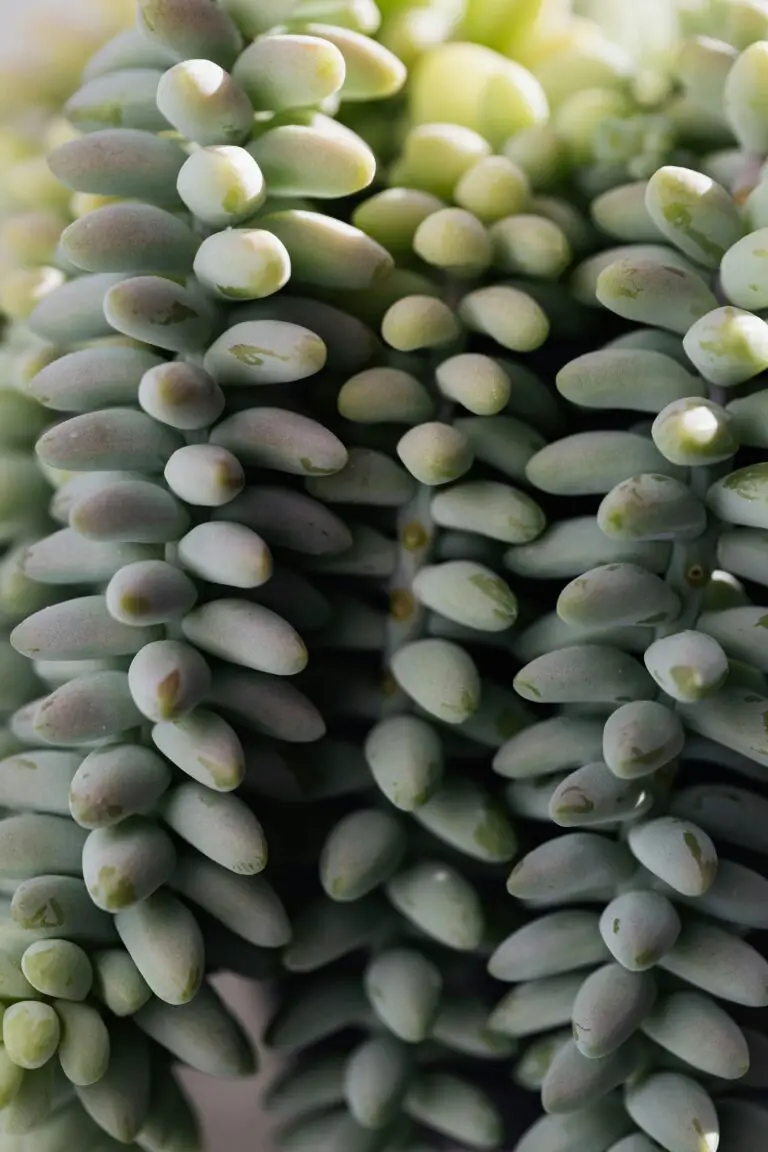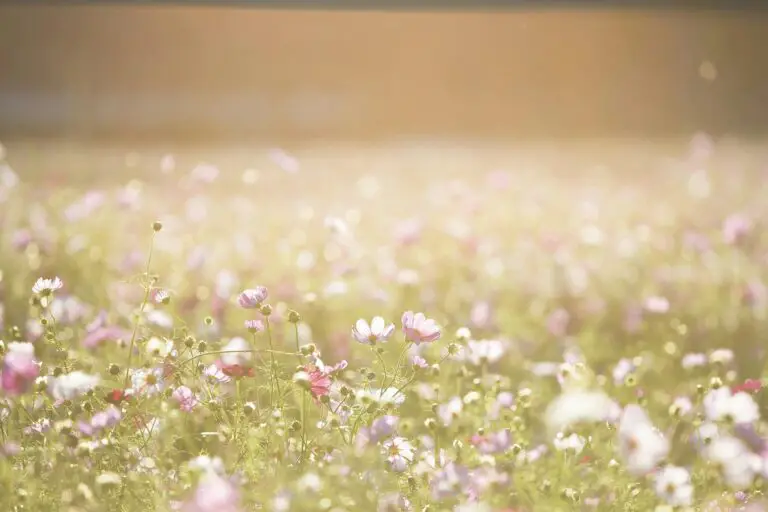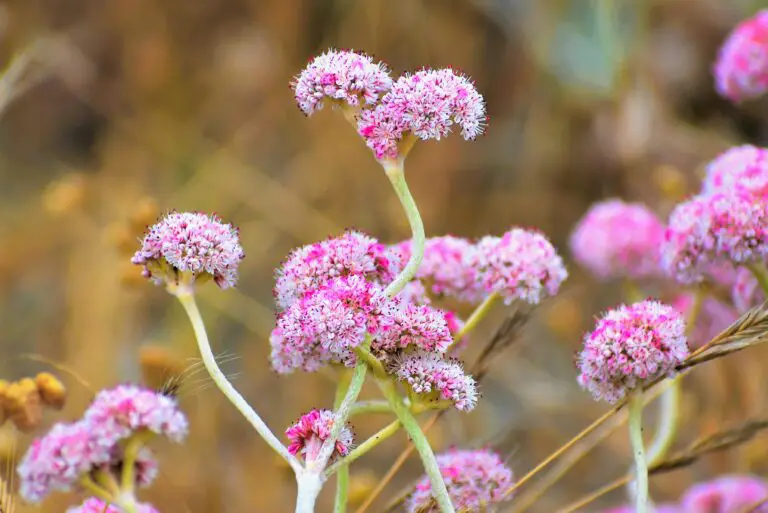Introduction to Sedums
Step into the world of sedums, commonly known as ‘stonecrop,’ and ponder a moment on why these succulent jewels have captivated the hearts of gardeners and landscapers across the globe. Bursting with resilience and showcasing an array of forms and hues, sedums have a story to tell—one rooted deep in the well-trodden soils of their native lands.

Imagine a tapestry woven with every shade of green, pink, and yellow, punctuated by starry blooms that seem to mock the very concept of high-maintenance gardening. From the charming clusters that snuggle between rocks to the robust mounds claiming their territory in garden beds, sedums have etched their presence across diverse landscapes.
In a world where time is precious and ease is a treasured commodity, these hardy perennials have curried favor. Whether it’s in a suburban rockery or an urban container garden, sedums thrive with an almost stoic demeanor, brushing off neglect and drought with silent grace. They’re the troopers of the plant world, asking little but offering an enchanting view in return.
As you amble through your local nursery, you might stumble across a sedum variety that catches your eye, sparking curiosity about its ancestral grounds. Each stonecrop species carries with it whispers of its origins, inviting you to unearth the rich tapestry of environments they hail from.
Sedum Species: A Diverse Family
Imagine yourself wandering through a sunbathed rocky outcrop or exploring the nooks of a dry forest, and you stumble across a vibrant patch of sedums, those hardy and adaptable survivors flourishing in conditions that would leave other plants wilting. This isn’t just a fairytale; it’s the everyday reality for the diverse family of sedum species that have conquered a multitude of habitats around the globe.
From the steep cliffs where only the most tenacious plants dare to take root, to the bustling city rooftops, sedums thrive with a sort of botanical bravado. With their fleshy leaves, these succulents create a lush tapestry of textures and colors, ranging from the blue-green hues reminiscent of the ocean’s depth to the fiery reds that rival the most brilliant sunsets. Different species of sedums have an almost shape-shifting quality, sporting upright, bushy forms or sprawling out as ground cover.

Ever seen a sedum blanketing a green roof? This hardy trooper is a sustainability warrior, basking in the full glare of the sun while its roots wick up scant rainfall, cooling our urban spaces with nary a complaint. The vivid array of sedums is not just a feast for the eyes; they’re a testament to the incredible adaptability of these resilient perennials, which can endure where other plants might throw in the proverbial trowel.
In a flowering display that ranges from starry white to the deepest fuchsia, sedums ensure that their hardiness does not come at the cost of beauty. For those keen on giving some care tips a go, you’ll find sedums are rewarding plants that offer a brilliant show with minimal fuss. Whether you’re a seasoned gardener or a budding enthusiast, sedums stand ready to bring life to any corner of your world.
Native Habitats of Sedums
Pop quiz: Where do you find a sedum’s native stomping grounds? If you guessed a wide variety of locales, you’d be spot on! These versatile plants are the chameleons of the plant world, blending into landscapes from rocky cliffs to arid deserts. Let’s take a leaf out of the sedum’s book and uncover the secrets of their global habitats.
Imagine wandering through Mexico, and there you are, greeted by sedums soaking up the sun like a tourist on the beaches of Cancún. These hardy succulents don’t just thrive; they reign supreme in the land of fiestas and siestas. But don’t box them in as sun-chasers; they adapt to the cool mountains too, showing off their resilience.
Ever heard of stonecrops? That’s another name for these botanical shape-shifters, and it hints at their love for rocky situations. Sedums make themselves right at home in the craggy terrain of the European Alps, asserting, “Here we grow!” with the same gusto as an Alpine yodel. Visit Gardening Know How to dive deeper into the world of sedums and their diverse growing conditions.
Now, let’s zoom out to the broad plains of Central Asia. Here, sedums aren’t merely surviving; they’re throwing a green party across the steppes. And they don’t have to RSVP to harsh conditions; they bring their own drought-resistant flair, mingling with grasses and wildflowers like natural socialites.
Not only do they have passports stamped with global visas, but sedums are environmental heroes too. They’re like Mother Nature’s mats, covering ground with a living shield that battles erosion and drought – nature’s own erosion-fighting, water-conserving warriors. And guess what? This power isn’t restricted to far-off lands. Sedums can bring their ecological superpowers right to your garden, transforming it into an eco-haven one succulent at a time.
Inspired yet? Picture this: a patchwork quilt of sedums, from the buttery yellows of ‘Angelina’ to the deep purples of ‘Purple Emperor’, thriving in your backyard sanctuary. No need for intricate garden plots; sedums are the ultimate plant-and-forget gems of the green world, happy as long as the sun’s in their sky and the soil’s beneath their roots.
Adaptations and Growth Conditions
Imagine nature’s own little water-storing wonders, perfectly designed to thrive in some of the most challenging environmental conditions. Sedums, with their plump, succulent leaves, have become masters of survival. But how do they do it? Let’s delve into the remarkable world of sedums and their unique adaptations that enable them to prosper.
Sedums have made their home in areas where other plants might surrender to the elements. They’re equipped with superpowers like drought resistance, which comes from their ability to store water in their leaves—a true testament to nature’s ingenuity! This makes them resilient companions that can endure long periods without a single raindrop.
Not just any soil will do for these hardy plants. Sedums are fond of well-drained soils, turning their noses up at waterlogged conditions. They’re the epitome of ‘less is more’, preferring a soil bed that doesn’t hold onto moisture for too long, making sure their roots are as snug and dry as a bug in a rug.
Ever spotted a sedum spreading its waxy leaves towards the sun? These sunbathers are connoisseurs of light, basking in it as if they’re on a permanent vacation. What’s more, their leaves come in a kaleidoscope of colors, from green to red to purple, adding a touch of drama to any landscape.
For those intrigued by these charismatic plants, there’s more to learn about the secrets of planting and nurturing sedums. Meanwhile, grab your notebook and let’s journey through the sedums’ playbook of adaptations.
With all these adaptations, it’s no surprise that sedums have spread far and wide, making themselves at home across the globe. Dive deeper into their distinct traits with this insightful video:
The story of sedums is one of remarkable resilience and beauty, a testament to the power of evolution and adaptation. The next time you spot a sedum soaking up the sun, take a moment to appreciate its remarkable journey to become the plant perfection it is today.
Sedums Around The World: From America to Asia
Dive into the fascinating world of sedums, the resilient succulents that have mastered the art of thriving across diverse terrains! From the rugged landscapes of North America to the lush regions of Asia, these botanical wonders have left their green thumbprint around the globe.

In North America, sedums stand tall against the dramatic backdrop of rocky cliffs and arid deserts. They blend seamlessly with wildflowers and grasses, creating a mosaic of life in every nook and cranny. Picture the ‘Autumn Joy’ sedum with its glorious rust-colored blooms, a vibrant contrast to the endless blue skies of the American Southwest.
Moving over to Europe, these stonecrops share the landscape with ancient ruins, bringing history to life with their ageless beauty. The cobblestone streets of the Old World seem even more enchanting with sedums softening their edges. You might even stumble upon the rare Sedum telephium, its fleshy leaves whispering tales from medieval gardens.
But sedums aren’t just cold-weather champions; trace their roots down to the southern hemisphere, and you’ll find them basking in the golden sun of Africa. Amidst savannas and sand dunes, species like Sedum caeruleum dazzle with azure blooms, mirroring the vast African skies.
Asia, a continent beaming with biodiversity, hosts sedums that have adapted to everything from temperate forests to alpine meadows. In Japan, the meticulously manicured gardens often feature the delicate Sedum makinoi, its teardrop leaves adding a touch of zen to tranquil settings.
It’s clear that sedums have grabbed their passport and jet-setted to every corner of the world. However, no matter where they lay their roots, understanding how to nurture these hardy plants is crucial. Discover effective seasonal care tips that ensure sedums continue to flourish and enchant in gardens both near and far.
From rare endemic species to those stealthily spreading across continents, sedums tell a story of survival, adaptation, and beauty. They are nature’s testament to the fact that with a bit of resilience, life can flourish in the most unexpected places. As gardeners, it’s our privilege to witness and contribute to the ongoing saga of sedums around the world.
Conservation of Native Sedums
In the realm of ecological safeguarding, sedums—a vast genus of succulents—present a remarkable case study. These resilient plants, hailing from diverse corners of the globe, offer a striking snapshot of nature’s adaptability. However, as resilient as they are, native sedum species face an array of threats that necessitate our immediate attention.
Native to habitats ranging from frost-laden mountains to arid deserts, sedums have carved out a niche in some of the most extreme environments. Yet, these hardy survivors are not invulnerable to the relentless pace of human expansion and the resulting habitat destruction. Our gardens and urban landscapes often feature sedums without a thought to their wild origins, underscoring a need to heighten awareness and foster respect for their natural environments.
Real-Life Examples and Human Impact
Take, for instance, the sprawling rooftops of urban buildings, increasingly adorned with sedum plants thanks to their drought-resistant superpowers. However, the allure of these green roofs should not overshadow the importance of conserving their native ecosystems. Each sedum lifted from its natural home for urban greening initiatives means one less in the wild, where it plays crucial roles such as soil stabilization and providing habitat for local fauna.
The story is similar in the rolling hills of the countryside, where sedums are frequently uprooted for commercial landscaping. As we shift our focus to native species for more sustainable gardening, it’s critical to do so responsibly. By prioritizing the propagation of sedums in situ or opting for cultured alternatives, we can minimize our ecological footprint and ensure these plants continue to thrive in their ancestral soils.
One notable project worth mentioning involves water conservation and the study of tiny sedum plants at BC Green Roof. Horticultural experts like Dutch horticulturalist Kevin actively educate and innovate in the field of sustainable plant use, proving that with the right approach, we can harmonize human activities with the needs of native sedum species.
Effective conservation efforts for sedums go beyond mere aesthetics or utilitarian uses. It’s about preserving a legacy, an intricate web of life where each species—including the humble sedum—holds a pivotal place. By championing native habitat conservation and responsible stewardship, we can ensure that sedums continue to grace our planet, not just our gardens, for generations to come.
Landscaping with Native Sedums
Imagine a garden that thrives year-round, demanding little attention while bestowing an array of ecological gifts. That’s the promise of incorporating native sedums into your landscaping efforts. Sedums, often referred to as “stonecrops,” are not just about adding a splash of color and texture; they can also usher in a new era of sustainable gardening practices.
Native to a wide range of environments, sedums are the unsung heroes of the botanical world. These robust plants are perfectly equipped to handle local conditions without requiring excessive pampering. From rocky ledges to woodlands, they’re the embodiment of resilience. By choosing local varieties, you benefit from plants that are pre-adapted to your area’s climate, pests, and other environmental factors, reducing the need for water, fertilizers, and pesticides.
Take the case of a suburban homesteader who decided to convert their traditional lawn into a sedum sanctuary. Almost immediately, they saw a decline in their garden’s resource consumption, and the vibrant sedum species became a living tapestry that required minimal upkeep. Not only did they contribute to water conservation, but they also noticed an uptick in pollinators gracing their garden, a testament to the ecological harmony that native sedums foster.

Beyond the convenience of low maintenance, opting for native sedums is an invitation for wildlife to flourish. These plants are often integral to the diets of local insects and birds, providing nourishment and habitat. As you watch butterflies dance from bloom to bloom, you’ll be witnessing the critical support sedums offer to biodiversity, turning your garden into a conservation-centric space.
Forgoing the exotic and often finicky alternatives for these hardy natives sends a ripple effect throughout the ecosystem. The deployment of sedums in landscaping is not merely a gardening choice; it’s a statement of environmental stewardship. As each season passes, your native sedum landscape can become a beacon for sustainability and a sanctuary for both flora and fauna — all while exuding sheer natural beauty.
Frequently Asked Questions
Curiosity blooms as vibrantly as sedums themselves, and it’s only natural that a plethora of questions accompany these intriguing plants. Let’s dig in and unearth the answers to some of the most common queries about the wonderful world of sedums and their origins.
What Exactly are Sedums?
Imagine a plant that’s not just easy on the eyes but also fiercely resilient. Sedums—also known by the charming name ‘stonecrop’—are succulents that adorn landscapes with a kaleidoscope of colors and forms. With fleshy leaves that store water, they’re the camels of the plant kingdom, thriving where thirstier plants might wither.

Where Are Sedums Native To?
Embarking on a global tour, we find sedums peeking out of rocky crevices in the mountains of Japan, basking in the Mediterranean sun, or dotting the rugged landscapes of the Americas. Sedums are globe-trotters by nature, with over 400 species calling diverse terrains their home. These hardy plants stake their claim from the sheer cliffs of the Scottish Highlands to the parched soils of Mexico.
Why Do They Thrive in Such Varied Environments?
Nature’s knack for adaptation shines through sedums. Each species has its own set of survival skills, whether it’s weathering the freeze-thaw cycles of alpine heights or lounging in the partial shade of a desert oasis. They don’t just survive; they thrive by turning challenges into opportunities.
Think of the sedum album ‘Coral Carpet’, transforming rooftops into blooms of pink festivities, or the sedum reflexum that cascades like a waterfall over the sides of a stone wall. It’s their ability to adapt that has enabled sedums to spread their roots wide and become native to so many spectacular places on our planet.
Are Sedums Easy to Grow at Home?
Yes, sedums are a gardener’s best friend! Whether you have a green thumb or not, these plants are agreeable companions for your garden adventures. Start with a sedum variety native to a climate similar to yours, and watch as it turns your garden corner or windowsill into a low-maintenance oasis.
From the sedum spurium ‘Dragon’s Blood’ spreading a carpet of crimson leaves, to the towering sedum telephium ‘Autumn Joy’ ushering in the fall with its starry blooms, these plants offer an endless array of options for the home gardener. So go ahead, invite a sedum into your life, and join the legion of enthusiasts who have made these native wonders a global sensation.


